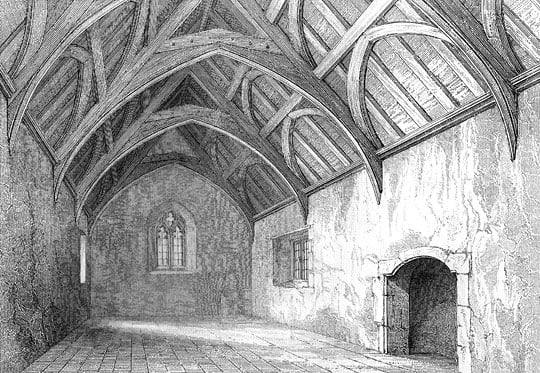Significance of Meare Fish House
The significance of the Fish House lies in what it reveals and may reveal about the development of English medieval domestic architecture and the management, economy and personnel of monastic estates (and particularly fisheries).

Condition
The Fish House is a remarkably unaltered house of the early 14th century.
Size versus Status
The small size of the house markedly contrasts with its high build quality and high-status use – a combination perhaps unique outside the category of priests’ and other clergy houses (mostly of the 15th century).
Architectural History and Domestic Planning
The arrangement of most English houses since the Middle Ages is rooted in the development of internal planning since between about 1200 and 1500. The key to this is the arrangement of the principal room, or ‘hall’, in relation to subsidiary rooms, particularly ‘services’ (for storing, preparing and dispensing food and drink) and ‘chambers’ (for sleeping, private business and recreation) – both in spatial terms and the routes between them. A significant development was the placing of one or more chambers over the hall, not common until about 1450, but ancestral to the integrated storeyed houses of today.
This occurs here, however, very much earlier – making the Fish House either the earliest known example of the arrangement, or the single known survivor of a more widespread type.
In reality, the oddity of plan is best explained by the Fish House's unusual status and function, while the absence of any immediate successors indicates that, although prefiguring the later medieval arrangement, it was not ancestral to it.
Function
The Fish House is almost certainly the only standing example of a medieval building directly associated with a freshwater fishery, and certainly the only one designed to house a monastic official.
Monastic History
As part of an exceptionally well-preserved and well-documented landscape, the building retains evidence of its function and development as a centre of monastic recreation, administration and income generation.